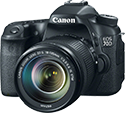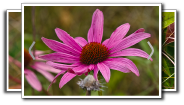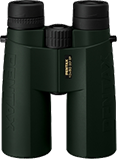Ichneumonid wasp
(Acroricnus stylator aequatus)
Conservation • Description • Habitat • Ecology • Distribution • Taxonomy
|
|
||||||||||||||
Description |
Acroricnus stylator aequatus is a common, widespread, small to medium-sized, parasitic wasp. It occurs in North America and Europe. In the United States it occurs from Maine to New Jersey, west to Minnesota and Illinois, and there is a single record from Louisiana. It also occurs in southern Ontario Canada. There are six currently recognized subspecies of Acroricnus stylator. They differ morphologically only in coloration. Only Acroricnus stylator aequatus occurs in eastern North America. The previously recognized subspecies Acroricnus stylator junceus was synonymized with Acroricnus stylator aequatus, which is now variable in coloration. Adults are active from late May to early October. They are found in open, partially forested areas and overgrown fields. They are often seen around houses because that is where there hosts build their nests. The larvae are parasites of the larvae of many bees and wasps, including Ancistrocerus adiabatus, Ancistrocerus birenimaculatus, Ancistrocerus oviventris, Ancistrocerus tigris, Chalicodoma muraria (Megachile parietina), Eumenes coarctatus, Eumenes fraternus, Eumenes pedunculatus, Eumenes pomiformis, Osmia adunca, Osmia spinolae, and Sceliphron caementarium. Size of Acroricnus species is given in terms of forewing length, which in this case is ¼″ to 9⁄16″ (6.5 to 13.5 mm). On the female, the body is black, shiny, and moderately hairy. The head is wider than long. The eyes are bulging and slightly notched. The plate on the face (clypeus) above the upper lip (labrum) is twice as wide at the bottom than it is long. The clypeus and labrum are yellow. The face may be yellow or black. There is a narrow yellow line on the inner margin (anterior orbit) of each compound eye, and a yellow line on each rear margin (posterior orbit). The finger-like sensory organs (palps) attached to the mouth are yellow. The antennae are dark brownish gray above with a broad yellow band beyond the middle. The undersides of the antennae are completely yellow. The upper plate on the first segment of the thorax (pronotum) is black. There may be a pair of small yellow spots at the front (pronotal collar). The small plates covering the wing bases (tegulae), the small plate on the rear part of the middle segment (scutellum), and the plate behind the scutellum (postscutellum), may all be partly or entirely yellow. The first abdominal segment (propodeum) is fused to the thorax giving the thorax the appearance of having four segments. The propodeum may have a large yellow area. The slender section (petiole) connecting the thorax and abdomen is arched, and it is about one-third as long as the abdomen. The wings are transparent and lightly tinted yellowish. The veins are brown to yellow. On the forewing, the thickened leading edge (costal area) of the wing does not have a cell. The base of the cubital (cu) vein is lacking. There are two recurrent (backward-turning) veins forming a cell. The first submarginal cell and the first discoidal cell are fused into a single large discosubmarginal cell. The shape of the discosubmarginal cell is said to resemble a horse’s head and is sometimes called the “horsehead cell.” The small cell in the middle of the wing (areolet) is large and five-sided. The crossveins that make up two of the sides make the areolet appear to be tipped downward. The legs are long, slender, and mostly yellow. On all legs, the first segments (coxae) are black, and they may have some yellow. On the hind legs, the femurs are black. The abdomen is slender and entirely black. The ovipositor is black and moderately long, shorter than the abdomen but distinctly longer than the thorax. The male is similar in coloration, but the face and mandibles are yellow, the cheeks are usually yellow, and the coxae on the middle legs are almost entirely yellow. |
Size |
Total length: ¼″ to 9⁄16″ (6.5 to 13.5 mm) |
Similar Species |
Habitat |
Open, partially forested areas and overgrown fields |
Ecology |
Season |
Late May to early October |
Behavior |
|
Life Cycle |
|
Larva Hosts |
Larvae of many bees and wasps |
Adult Food |
|
Distribution |
||
|
Sources |
|
| 2/27/2025 | ||
Occurrence |
||
|
||
Taxonomy |
|
Order |
Hymenoptera (Ants, Bees, Wasps, and Sawflies) |
Suborder |
Apocrita (narrow-waisted wasps, ants, and bees) |
Superfamily |
Ichneumonoidea (Ichneumonid and Braconid Wasps) |
Family |
|
Subfamily |
Cryptinae |
Tribe |
Cryptini |
Subtribe |
Osprynchotina |
Genus |
Acroricnus |
Species |
Acroricnus stylator |
Subordinate Taxa |
|
|
|
Synonyms |
|
Acroricnus cloutieri Acroricnus junceus |
|
Common Names |
|
This species has no common name. The common name of the family Ichneumonidae is iIchneumonid wasps, and it is applied here for convenience. |
|
Glossary
Areolet
A very small cell in the middle of the widest part of the forewing of some wasps, especially ichneumonid wasps.
Clypeus
On insects, a hardened plate on the face above the upper lip (labrum).
Labrum
The upper part of the mouth, sometimes considered the lower part of the face, corresponding to the upper lip, on an insect or crustacean.
Ovipositor
A tube-like organ near the end of the abdomen of many female insects, used to prepare a place for an egg and to place the egg.
Palp
Short for pedipalp. A segmented, finger-like process of an arthropod; one is attached to each maxilla and two are attached to the labium. They function as sense organs in spiders and insects, and as weapons in scorpions. Plural: palpi or palps.
Petiole
On plants: The stalk of a leaf blade or a compound leaf that attaches it to the stem. On ants and wasps: The constricted first one or two segments of the rear part of the body.
Pronotum
The exoskeletal plate on the upper side of the first segment of the thorax of an insect.
Propodeum
In Hymenoptera: the last segment of the thorax, anatomically the first segment of the abdomen.
Scutellum
The exoskeletal plate covering the rearward (posterior) part of the middle segment of the thorax in some insects. In Coleoptera, Hemiptera, and Homoptera, the dorsal, often triangular plate behind the pronotum and between the bases of the front wings. In Diptera, the exoskeletal plate between the abdomen and the thorax.
Tegula
A small, hardened, plate, scale, or flap-like structure that overlaps the base of the forewing of insects in the orders Lepidoptera, Hymenoptera, Diptera, and Homoptera. Plural: tegulae.
Visitor Photos |
||
Share your photo of this insect. |
||
This button not working for you? |
||
Alfredo Colon |
 |
MinnesotaSeasons.com Photos |
||
|
||
|
||

Slideshows |
|

Visitor Videos |
||
Share your video of this insect. |
||
This button not working for you? |
||
|
Other Videos |
||
Ichneumon (Ichneumonidae: Acrorcnis stylator) on Blossom |
About
Jun 23, 2010 Photographed at Turtle River State Park, North Dakota (22 June 2010). |

|
Created: 2/27/2025 Last Updated: © MinnesotaSeasons.com. All rights reserved. |


